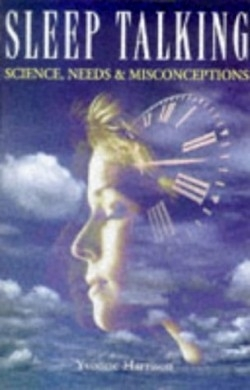Sleep Talking
Science Needs & Misconceptions
Whether thought of as “nature’s sweet nurse” or as a barometer of one’s well-being, sleep proves to be a fascinating subject in this book by Harrison, a psychology lecturer at Liverpool John Moores University in the United Kingdom, wherein current points of discussion about sleep in the scientific, medical, legislative, judicial, educational and social fields are presented in an engaging, clearly written manner.
Since “sleep is thought to be intricately linked with almost every area of our lives,” this book appeals to a wide range of readers (and not just those who “face adverse effects on health, accident rates, productivity and educational achievements” due to sleep loss). In an effort to show the multi-faceted nature of the subject, Harrison includes chapters on both the physical and cultural aspects of sleep and the legal ramifications of sleep-related violence. Each of the fifteen chapters is self-contained to target reader interest.
For those intrigued by the physical properties of sleep, Harrison presents well-organized information that both summarizes familiar material (the five stages of sleep, various sleep disorders and behaviors) and enlightens (how internal and external processes govern sleep).
Threaded throughout are interesting results of documented research, such as how people who regularly sleep more or less than eight hours a night often die sooner, or that the record for going without sleep is eleven nights. Those more interested in the cultural dimensions of sleep will also find this book a rich resource. Sleep has been thought of as a bridge between this world and another more mystical one: as an escape (Rip Van Winkle), as death’s twin (Romeo and Juliet) and as a reflection of character (“The sleepy fox seldom feathers breakfast”).
Harrison’s discussion of dreams is particularly good, whether they are seen as “a random series of neuronal firings” or memories of encounters with other worlds. Her chapter on precognitive dreams and out-of-body experiences is bolstered by chilling examples, along with their “scientific” explanations. The role of the subconscious in dreaming is examined by analyzing Abraham Lincoln’s famous dream prophesying his own death. “Lucid dreaming,” or controlling dream scripts, is also explored.
Other chapters of note include one on the legal issues involving responsibility for violence committed during sleepwalking (with true cases that read like mysteries) and one examining modern society’s effect on sleep and how shift work, jet lag, caffeine and the pace of life have affected the body’s internal rhythms.
Disclosure: This article is not an endorsement, but a review. The publisher of this book provided free copies of the book to have their book reviewed by a professional reviewer. No fee was paid by the publisher for this review. Foreword Reviews only recommends books that we love. Foreword Magazine, Inc. is disclosing this in accordance with the Federal Trade Commission’s 16 CFR, Part 255.

